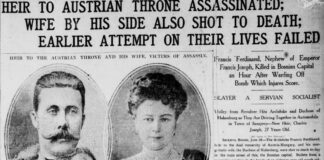Our history books could have been much different. Long chapters on how the British enslaved us could be a figment of wild imagination, had it not been for this one event that flipped the destiny of India on its head. Nourished by ambition, treachery and irresistible lust for power, the fall of Bengal empire in the Battle of Plassey of 1757 was a turning moment in the history of the Himalayan subcontinent and it altered the course of India’s history till eternity. No incident in the erstwhile Indian region has such massive significance on India’s destiny as does the Battle of Plassey that shackled the country and pushed it to its darkest times ever. The event does merit a much deeper look by all the enthusiasts of Indian history.
The history behind the event
The dice of British expansion had begun rolling around 4 centuries ago. By the early 1600s, the East India Company had already set up its base in Bengal and was eyeing for more power. It wanted to bring the area under its control, lest any other country or any other trading entity gained control of the resources of that region. Naturally, the tug of war for power resulted in friction between the trading company and the ruling dynasty. The East India Company had been headquartered in Calcutta, as it had been granted to them by Nawab of Bengal, Alivardi Khan. Things would have been okay if the British were content with this much. However, with ambition holding the reins of British minds, the Company went two steps ahead and built its own fort to protect its interests in someone else’s empire. Just imagine, which kingdom would like a foreign entity making its own fort inside the kingdom? How could a king tolerate the sight of a place coming up where His Highness himself cannot get entry? No wonder, the battle for power was an open secret by then and there was a vulgar display of defiance through Fort William.
By the time, Siraj-ud-Daulah succeeded Nawab Alivardi Khan in 1756, the hostilities between Britain and France had already escalated to the point of a global imperial struggle. The East India Company was in no mood to endure even the shadow of the French in Bengal. On the other side, the French were already occupying Chandernagore in Bengal and had become a direct competition to the interests of the British, who had already built a mini town in Calcutta by that time.
It seems that when something bad has to happen, the entire universe conspires to bring it to fruition. During this very same time, Nawab Siraj-ud-Daulah also grew increasingly keen to wriggle out of the murky political waters that threatened his kingdom’s security by aligning with the French. This was one of the final straws in the animosity that the British bore in their heart against Bengal kingdom. The amalgam of political struggles, economic insecurities, and an insatiable hunger for control over Bengal brought the British forces and the Bengal empire face to face on the battlefield.
The grand conspiracy against the Nawab
Siraj-ud-Daulah had tried taming the British company by reducing its trading privileges in the region. He hoped that this move will curtail the influence of the British and will show them who the real monarch is. However, as stubborn as they could be, the British point blankly refused to comply, following which the Nawab was compelled to occupy the city of Calcutta. Perhaps, this was the last nail in the coffin of Bengal empire. The one who responded to this attack on the British’s imperial motives was the British Lieutenant Colonel, Robert Clive. And his invincible weapon was the infamous traitor of Bengal, Bengal’s military general Mir Jafar. This was the man who had already once betrayed erstwhile Nawab Alivardi Khan during his battle against the Marathas in the Battle of Burdwan. Robert Clive knew how to exploit the hunger of others to his advantage.
The drumrolls of British conquests began in January 1757, when Captain Coote of the East India Company sacked the town of Hooghly, thereby throwing the gauntlet at the Nawab. When the conflict resulted in the humiliating Treaty of Alinagar, Nawab Siraj-ud-Daulah realized clearly that the British were an imminent major threat to his supremacy and had to be routed out somehow. When the British conquered the Fort of Chandernagore by driving the French out, the Nawab hurriedly began strengthening his armed forces. One can easily imagine how the distrust between the British and the Nawb would have escalated during those times and it must not come as a surprise that the British were monitoring each and every move of the Bengal king.
What is more intriguing about the Battle of Plassey is the way a tiny army of the East India Company vanquished the goliath of Bengal’s forces using tactics outside the battlefield. Robert Clive, the Machiavellian man that he was, was unmistakably aware that his army of 3,000 men was no match to the 50,000 men strong army of the Nawab. Moreover, the Nawab had been reported to be in clandestine negotiations with the French power in India. Clive calculated his odds and as a part of the Company’s Divide and Rule policy, began communicating with Mir Jafar and other powerful men, like army paymaster Rai Durlabh, merchant Omichund and Yar Lutuf Khan, who were disgruntled with the Nawab’s rising influence over his subjects and territory’s wealth. Clive entered into a furtive alliance with these conspirators and promised to elevate Mir Jafar to the throne, something that he had always dreamt of and had lusted for. The deal was sealed and the fox just had to wait for the lion king to be brought down by his own pride.
The fateful betrayal
Just like some Argalis (species of massive goats) get killed by their own horns that were meant to protect them, Nawab Siraj-ud-Daulah got his miserable end written by the very men who vowed to defend him. On June 23rd, 1757, the British forces met Mir Jafar at Plassey. The battle began early morning with the French forces supporting the Nawab against the red-clad British sepoys. The Bengal’s force of around 45,000 warriors threatened to obliterate the British strength of mere 3,000 soldiers. However, Clive had his nefarious designs well planted and had already set active the termites in the roots of the Bengal empire. When Nawab’s loyal general, Mir Madan got fatally injured, Mir Jafar was entrusted with the responsibility of leading the forces. The unassuming Nawab would have never guessed the mistake he had just committed. The traitor general immediately sent a word to Clive to keep pushing forward. Meanwhile, another traitor, Rai Durlabh convinced the Nawb to flee at the earliest, leaving the battle to his generals. As the Nawab agreed, the final chess pieces were set to motion for the ultimate checkmate.
By afternoon, Mir Jafar had ceased the cannonade, and he held his forces back. The British forces took full advantage of the terrain, pillaged the battlefield and brought the once-indomitable authority of Bengal to an ominous collapse. While Siraj-ud-Daulah was soon executed, Mir Jafar was elevated to the position of a puppet monarch and had to pay huge sums of money to the East India Company for military support. We all know that evil is a friend to none. Soon, the British who had shown so much of favor to Mir Jafar, threw him out of his authority and slowly engulfed Bengal under their dominion.
Changing the world scenario
Times for the Indian subcontinent would no longer be the same for two centuries to come. The betrayal of a lustful military general and the calculative designs of the British soon established the reign of the East India Company, as it now began controlling the administrative, civil, military and revenue-related activities in Bengal. The fall of Bengal at the hands of defectors gave the money and resources to the British establishment during the age of imperialism and made the British an unconquerable power in South Asia. One man’s lust for power weakened the Mughal empire in the country and commenced the infamous ‘British Raj’, which was quite a revolutionary turn of events for South East Asia as well.
The historical and cultural upheaval that followed the British expansion into the nook and corner of South Asia is known to each one of us. Had Mir Jafar not conspired against the Nawab, the British could have been tamed and the country would not have come under the enslavement by those who treated Asians like animals. Unquestionably, the fall of Bengal was one historical event that changed the Indian and the world scenario in one blow.










